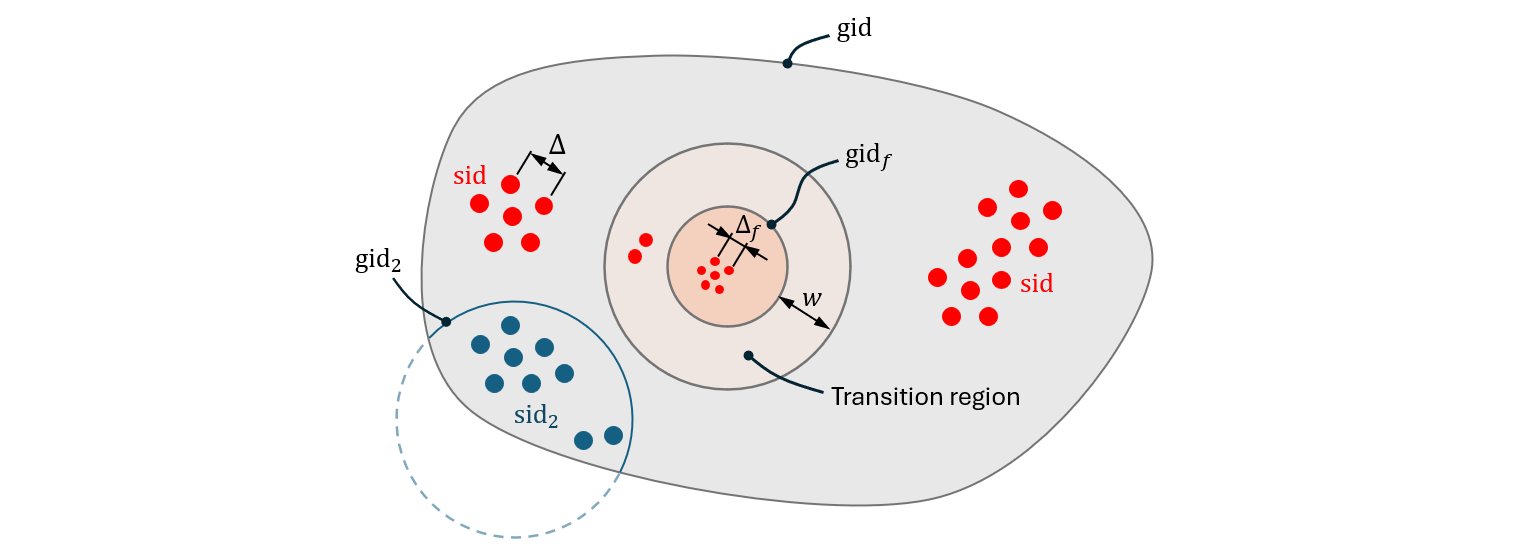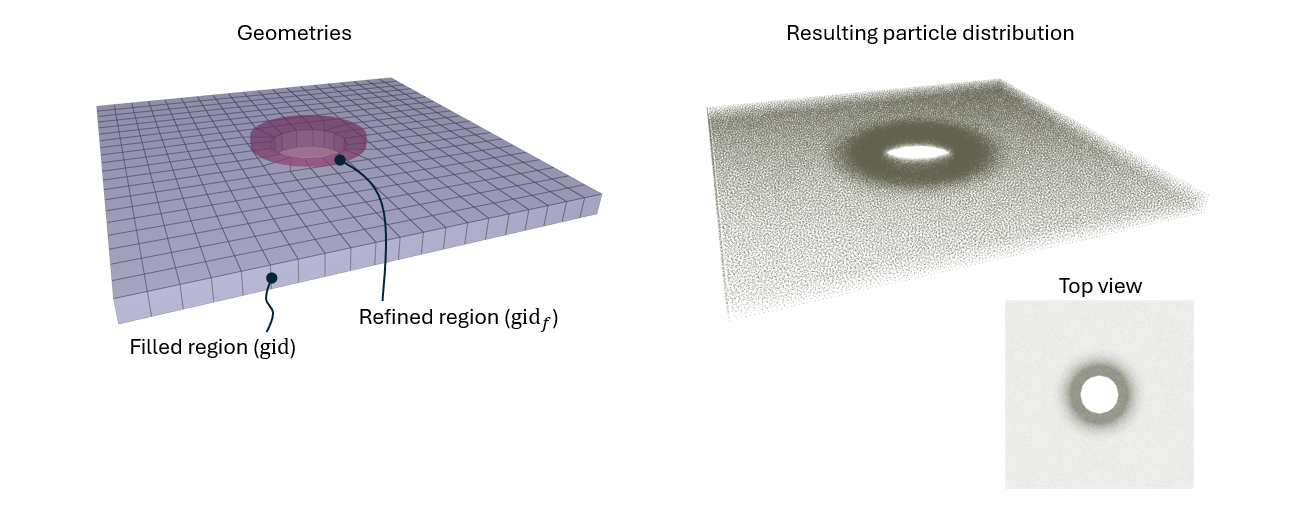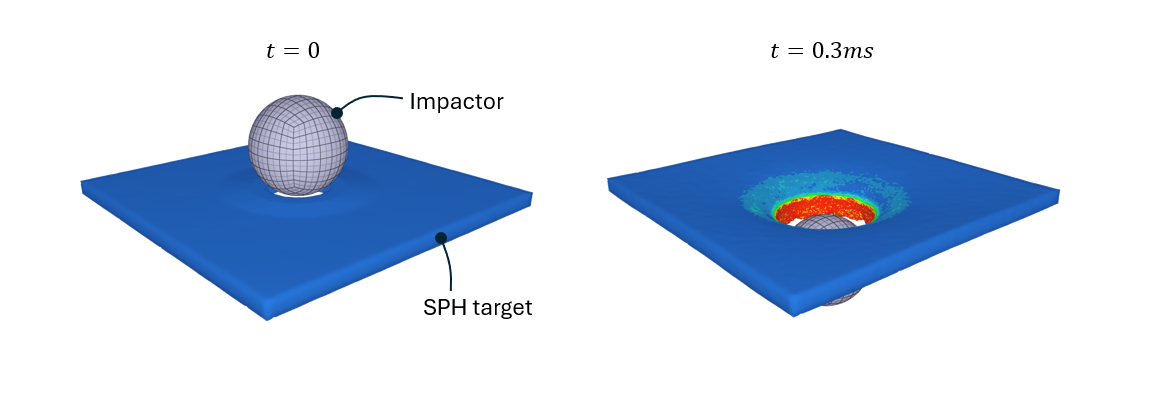GENERATE_PARTICLE_DISTRIBUTION
Particle
"Optional title"
sid
gid, gid${}_f$, $\Delta$, $\Delta_f$, $w$, $s$
gid${}_2$, sid${}_2$
Parameter definition
Description
This is a pre-processing command that is used to distribute SPH particles inside a geometry gid. It uses an iterative process where particles are repositioned for an as accurate spacing and density as possible. The SPH kernel function is used to evaluate the local density.
A binary file with the final distribution is written to disk. This binary file can be imported and used in subsequent Surface SPH simulation models.
By default all particles are assigned to belong to subdomain sid. However, it is also possible to define a geometry gid${}_2$, within which particles are assigned to subdomain sid${}_2$.

Example
Filling of a geometry with SPH particles
Example where a geometry is filled with SPH particles to model an aluminum plate with a hole at its center. The generated particle distribution is stored in the binary file plist_2.bin (the suffix "2" reflects the specified sub-domain ID). Note that the generated particle distribution does not contain any material information. Hence, when used in a subsequent simulation model, the particle list must be complemented with a PARTICLE_SPH command.
Step 1 - generate particle distribution

Step 2 - impact simulation

